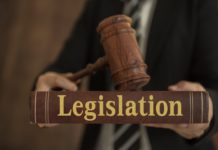AAT required to disregard entire hearing due to interpreting issues?
Federal Court. AAT convened 3 hearings: 1st was adjourned shortly after starting; 2nd was adjourned after 2.5 hours due to concerns about quality of the English / Tamil interpreting; 3rd was the substantive one. In its decision, AAT said it gave the 2nd hearing "little weight", given the interpreting concerns. Did Division 4 of Part 7 of the Migration Act 1958 (Cth) require AAT to disregard the entirety of the evidence at 2nd hearing?
Can courts weigh in on ‘weight’?
Federal Court. Although the weight to be ascribed to evidence is a matter for administrative decision-makers, can a court in some circumstances "set aside an administrative decision which has failed to give adequate weight to a relevant factor of great importance, or has given excessive weight to a relevant factor of no great importance"? In determining whether an administrative decision is legally unreasonable, is it to the point that it might be characterised as cruel or inhumane?
Unlawful due to cancellation or refusal?
Federal Court. Subsection 196(4) of the Migration Act 1958 (Cth) read: "if the person is detained as a result of the cancellation of his or her visa under section 501, 501A, 501B, 501BA or 501F, the detention is to continue unless a court finally determines that the detention is unlawful, or that the person detained is not an unlawful non‑citizen". DHA cancelled Applicant's BVA under s 501(3A) and then refused to grant him a protection visa. Was he detained "as a result of the cancellation" of his visa or rather as a result of the visa refusal? Did FCA have power under s 23 of the Federal Court of Australia Act 1976 (Cth) to order his release on an interlocutory basis on the basis that s 196(1) of the Migration Act is not inconsistent with s 23?
GTE: applicants on notice of Direction 69 factors; previous tourist visa probative?
Federal Court. In the context of assessing cl 500.212 (GTE), are merits review applicants necessarily on notice of the relevance of the matters set out in Direction 69 due to the very fact that they are so set out? Was it legally unreasonable for the AAT to treat what it found to be false statements made in a previous tourist visa application made by the Appellant as probative of an intention to stay in Australia beyond the conclusion of the student visa?
Materiality test explained
Federal Court. An error is only jurisdictional if material to the decision. Is the materiality test about whether the decision would (as opposed to could) have been different had the error not occurred? If the question is about whether the decision could have been different: is there a need to make any further assessment of the likelihood of the decision being different had the error not occurred; does that mean that an error can always be surgically removed from the decision-maker's reasons, leaving the framework surrounding it intact?
Part 2: Double counting?
Federal Court. Cl 14.4(1) of Direction 79 required that the following factor be take into consideration in the context of s 501CA(4): "Impact of a decision not to revoke on members of the Australian community, including victims...". Is cl 14.4(1) meant to refer to "impact of a decision to revoke"? Is cl 14.4(1) concerned with whether victims or their families are concerned about whether the non-citizen would remain in Australia, instead of the objective impact of the offending on victims? If so, was that objective impact an irrelevant consideration for cl 14.4(1)? If so, did the consideration of that objective impact amount to jurisdictional error?
s 91X: duty of imperfect obligation?
Federal Court (Full Court). Can it be said that "s 91X of the [Migration Act 1958 (Cth)] gives rise to a duty of imperfect obligation, breach of which neither invalidates the FCCA’s earlier decision, nor sounds in a judicial remedy, including declaratory relief"? We summarise the answer to this and several other questions.
s 501(2): re-exercising discretion based on new offence?
Federal Court. In Brown & Makasa: delegates cancelled visas under s 501(2); AAT set aside cancellations; Minister then personally exercised discretion to cancel under s 501(2) based on the same offences; court held power to exercise discretion under s 501 based on the same offences was spent by delegates' decisions. Here, discretion to cancel under s 501(2) was enlivened by an offence, but delegate decided not to cancel. Was Minister then allowed to personally exercise discretion under s 501(2) based on a new offence?
MARA: sponsorship requirements
This decision illustrates how the OMARA can use metadata to check whether applications are genuine and the potential level of involvement of practitioners in the provision of "misleading or inaccurate statements"
Does revocation of a visa cancellation bind AAT on revocation of another cancellation?
Federal Court. Judicial review applicant's visa was mandatorily cancelled, but cancellation was revoked by delegate under s 501CA(4). His visa was mandatorily cancelled again under s 501(3A) due to further offences, but this time a delegate refused to revoke cancellation. Was AAT bound to set aside non-revocation decision, on the basis that s 474(1)(a) provided that the revocation decision was final and conclusive? Was revocation decision a mandatory relevant consideration in the context of AAT's review of the non-revocation decision?





















